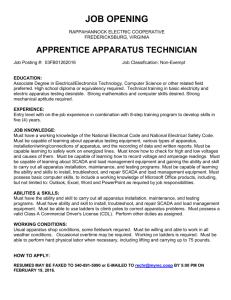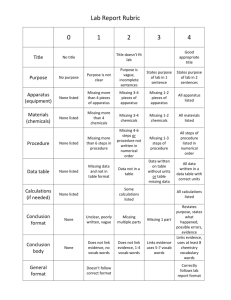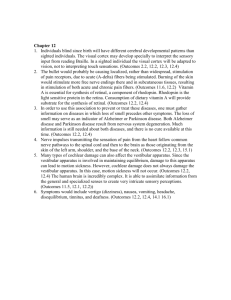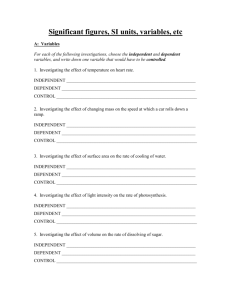The intent of this procedure is to give general guidelines on aerial
advertisement
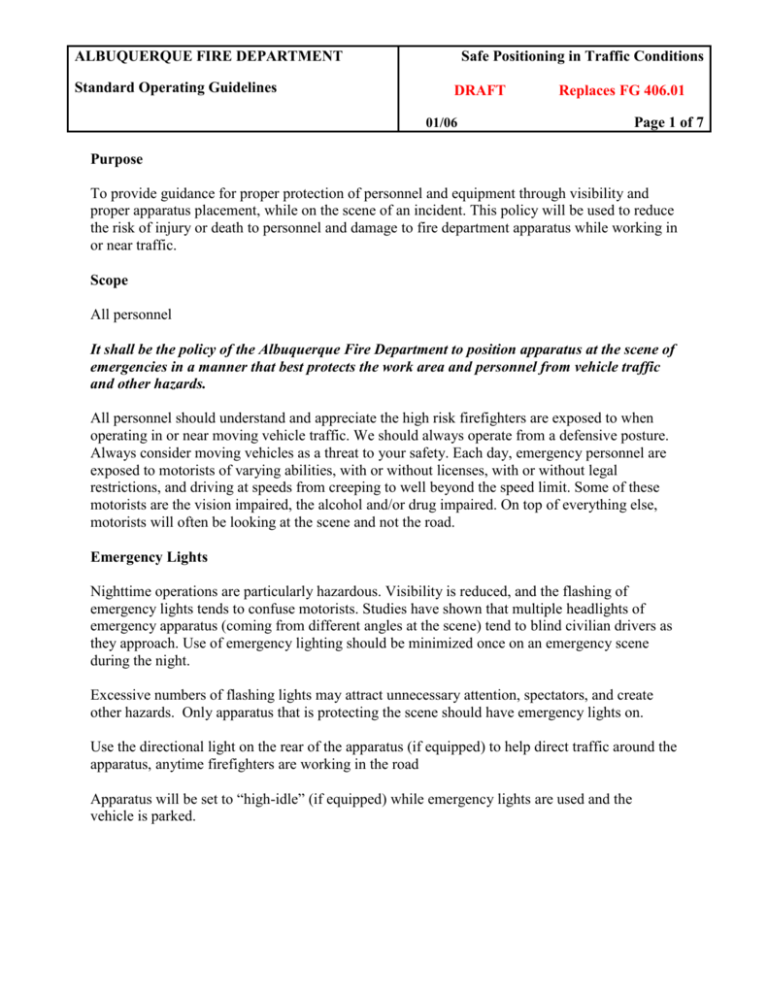
ALBUQUERQUE FIRE DEPARTMENT Standard Operating Guidelines Safe Positioning in Traffic Conditions DRAFT Replaces FG 406.01 01/06 Page 1 of 7 Purpose To provide guidance for proper protection of personnel and equipment through visibility and proper apparatus placement, while on the scene of an incident. This policy will be used to reduce the risk of injury or death to personnel and damage to fire department apparatus while working in or near traffic. Scope All personnel It shall be the policy of the Albuquerque Fire Department to position apparatus at the scene of emergencies in a manner that best protects the work area and personnel from vehicle traffic and other hazards. All personnel should understand and appreciate the high risk firefighters are exposed to when operating in or near moving vehicle traffic. We should always operate from a defensive posture. Always consider moving vehicles as a threat to your safety. Each day, emergency personnel are exposed to motorists of varying abilities, with or without licenses, with or without legal restrictions, and driving at speeds from creeping to well beyond the speed limit. Some of these motorists are the vision impaired, the alcohol and/or drug impaired. On top of everything else, motorists will often be looking at the scene and not the road. Emergency Lights Nighttime operations are particularly hazardous. Visibility is reduced, and the flashing of emergency lights tends to confuse motorists. Studies have shown that multiple headlights of emergency apparatus (coming from different angles at the scene) tend to blind civilian drivers as they approach. Use of emergency lighting should be minimized once on an emergency scene during the night. Excessive numbers of flashing lights may attract unnecessary attention, spectators, and create other hazards. Only apparatus that is protecting the scene should have emergency lights on. Use the directional light on the rear of the apparatus (if equipped) to help direct traffic around the apparatus, anytime firefighters are working in the road Apparatus will be set to “high-idle” (if equipped) while emergency lights are used and the vehicle is parked. ALBUQUERQUE FIRE DEPARTMENT Standard Operating Guidelines Safe Positioning in Traffic Conditions DRAFT 01/06 Replaces FG 406.01 Page 2 of 7 Safety Benchmarks Emergency personnel are at great risk while operating in or around moving traffic. There are approaches that can be taken to protect yourself and all crew members: 1. 2. 3. 4. Never trust the traffic Engage in proper protective parking Reduce motorist vision impairment Wear orange, high visibility reflective vests or structural turnout gear The wheel chocks on Engines, Ladders and Squads will be used anytime the apparatus is parked on a slope. Anytime the Engine is in pump or the Ladder is set-up for aerial deployment the wheel chocks will be used. Both wheel chocks will be used on the same apparatus tire. Listed below are benchmarks for safe performance when operating in or near moving vehicle traffic. 1. Always maintain an acute awareness of the high risk of working in or around moving traffic. Never trust moving traffic. Always look before you step! Always keep an eye on the traffic! 2. Always position apparatus to protect the scene, patients, emergency personnel, and provide a protected work area. Where possible, angle apparatus at 45 degrees away from curbside to direct motorist around the scene (See Figure 1). Apparatus positioning must also allow for adequate parking space for other fire apparatus (if needed), and a safe work area for emergency personnel. Allow enough distance to prevent a moving vehicle from knocking fire apparatus into the work areas. ALBUQUERQUE FIRE DEPARTMENT Standard Operating Guidelines Safe Positioning in Traffic Conditions DRAFT 01/06 Replaces FG 406.01 Page 3 of 7 3. At intersections, or where the incident may be near the middle of the street, two or more sides of the incident may need to be protected. Block all exposed sides. Where apparatus is in limited numbers, prioritize the blocking from the most critical to the least critical (See Figures 2, 3 and 4). 4. For first arriving Engine companies where a charged hoseline may be needed, angle the engine so that the pump panel is “down stream,” on the opposite side of on-coming traffic. This will protect the pump operator (See Figure 5). ALBUQUERQUE FIRE DEPARTMENT Standard Operating Guidelines Safe Positioning in Traffic Conditions DRAFT Replaces FG 406.01 01/06 Page 4 of 7 Figure #5 5. The initial company officer (or Command) must assess the parking needs of later arriving fire apparatus and specifically direct the parking and placement of these vehicles as they arrive to provide protective blocking of the scene. This officer must operate as an initial Safety Officer. 6. During daytime operations, leave all emergency lights on to provide warning to drivers. 7. For nighttime operations, turn off fire apparatus headlights. This will help reduce the blinding effect to approaching vehicle traffic. Other emergency lighting should be reduced to emergency flashers where possible. 8. Crews should exit the curb side or non-traffic side of the vehicle whenever possible. 9. Always look before stepping out of apparatus, or into any traffic areas. When walking around fire apparatus parked adjacent to moving traffic, keep an eye on traffic and walk as close to fire apparatus as possible. 10. When parking apparatus to protect the scene, be sure to protect the work area also. The area must be protected so that patients can be extricated, treated, moved about the scene, and loaded into rescues safely. Do not position the apparatus exhaust in the direction of patients who are entrapped in motor vehicles. ALBUQUERQUE FIRE DEPARTMENT Standard Operating Guidelines Safe Positioning in Traffic Conditions DRAFT Replaces FG 406.01 01/06 Page 5 of 7 11. Wear gear with a reflective trim any time you are operating in or near vehicle traffic. 12. Once enough fire apparatus have “blocked” the scene, park or stage unneeded vehicles off the street whenever possible. Bring in rescue companies one or two at a time and park them in safe locations at the scene. This may be “down stream” from other parked apparatus, or the rescue maybe backed at an angle into a protected loading area to prevent working in or near passing traffic. At residential medical emergencies, park rescues in driveways for safe loading where possible. If driveways are inaccessible, park rescues and other apparatus to best protect patient loading areas. (See Figures 6 and 7) Figure #6 Figure #7 ALBUQUERQUE FIRE DEPARTMENT Safe Positioning in Traffic Conditions Standard Operating Guidelines DRAFT 01/06 Replaces FG 406.01 Page 6 of 7 13. At major intersections a call for police response may be necessary. Provide specific direction to the police officer as to exactly what your traffic control needs are. Ensure the police are parking to protect themselves and the scene. Position rescues to protect patient loading areas. (See Figure 8) Figure #8 ALBUQUERQUE FIRE DEPARTMENT Standard Operating Guidelines Safe Positioning in Traffic Conditions DRAFT 01/06 Replaces FG 406.01 Page 7 of 7 Interstate Operations Interstate emergencies pose a particular high risk to emergency personnel. Speeds are higher, traffic volume is significant, and civilian motorists have little opportunity to slow, stop or change lanes. The New Mexico State Police will also have a desire to keep the interstate flowing. Where need be, the Interstate can be completely shut down. This, however, rarely occurs. For Interstate emergencies, we will continue to block the scene with the first apparatus on the scene to provide a safe work area. Other companies may be used to provide additional blocking if needed. The initial company officer, or Command, must thoroughly assess the need for apparatus on the Interstate and their specific positions. Companies should be directed to specific parking locations to protect the work area, patients, and emergency personnel. Other apparatus should be parked downstream when possible. This provides a safe parking area. Staging of ambulance companies off the Interstate may be required. Ambulances should be brought into the scene one or two at a time. A safe loading area must be established. Command should establish a liaison with the New Mexico State Police or other law enforcement agency as soon as possible to jointly provide a safe parking and work area and to quickly resolve the incident. The termination of the incident must be managed with the same aggressiveness as initial actions. Crews, apparatus, and equipment must be removed from the Interstate promptly, to reduce exposure to moving traffic. Often times two or more sides may need to be protected. Often times two or more sides may need to be protected. Prioritize placement of the Apparatus by blocking from the most critical to the least critical side. To protect the pump operator, position the apparatus with the pump panel on the side opposite of on coming traffic Where possible, have ambulances park in driveways or position ambulances to protect patient loading areas (Figure #8.) Officers will provide specific direction to police as to what traffic control needs they have. Drivers will position all apparatus to protect patient loading areas.

